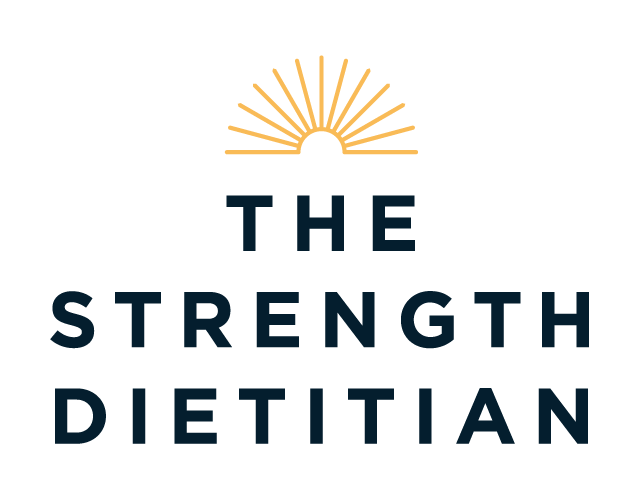Should You Cut or Bulk?
The title of “Should you Cut or Bulk” can have a double meaning.
From one perspective, you can read it and wonder whether the entire concept of bulking and cutting is a flawed concept. Certain experts in the fitness space criticise the concept of bulking and cutting phases and prefer the idea of recomping.
The other perspective is that, should you decide you want to go through these phases, which one should you do first and why?
This article aims to address both of those meanings.
And for the sake of definition, I define bulking as intentionally entering a calorie surplus for the purposes of muscle growth. I define cutting as intentionally entering a calorie deficit for the purposes of fat loss.
Based on those definitions, I think it simplifies part of the debate. For example, if you are currently a certain weight, and you want to intentionally increase your weight, by the definition above, you would need to “bulk.” By this definition, even a small calorie surplus is a bulk.
A lot of the people who disagree with the concept of bulking are often referring to the concept of trying to gain size relatively quickly, instead of the broader definition above.
And the last piece I will add on that is that it is far more efficient to gain muscle while in a calorie surplus than it is at maintenance calories, and it is far more efficient to lose fat while in a calorie deficit.
By that logic, if you intend to have a significant transformation in your physique over a long period of time, it is likely far more efficient to use bulking/cutting cycles than to aim to recomp the entire time.
When to Bulk
Whether you are a strength athlete or just the average person trying to gain muscle, if you have relatively ambitious goals in terms of muscle growth, you will likely need to intentionally enter a calorie surplus at some stage.
So really, any time you specifically want to prioritise gaining muscle, it could make sense to do a controlled bulk.
To be more specific though, most people want to be a certain level of leanness first.
This could be for health reasons, aesthetics, or performance reasons.
Being at too high of a body fat can be detrimental from a health perspective and increase the risk of certain conditions.
Most people prefer to be leaner from a looks perspective as well.
And for performance reasons, it can affect things in multiple ways. If you are in a weight class sport like powerlifting, it can make sense to stay a bit leaner, since having more muscle in comparison to your competition in the same weight class can give you and advantage. If you play sports that benefit from a better power-to-weight-ratio (which really covers most sports) it can make sense to stay relatively lean).
Additionally, having excess body fat after a certain level could potentially impact gym performance if you struggle to recover between sets.
So ideally you only enter a calorie surplus when you are comfortable with your level of body fat, and even better if you have some buffer where you would be comfortable gaining a little bit of body fat in the process.
There can be some exceptions of course. For example, certain strength athletes competing in higher weight classes might not need to worry about their body fat, if main goal is to just gain as much muscle as possible and get as strong as they can. But even in those cases I still would recommend a relatively controlled bulk, even if it is just for health reasons, since that can become a limiting factor in certain situations.
The last thing I’ll mention is that larger calorie surpluses than ideal typically do not significantly speed up the rate of muscle growth, but dramatically speed up the rate of fat gain.
People who have more potential to gain muscle (new to lifting, good genetics, good sleep, minimal stress, good training, good diet overall with sufficient training) are likely able to have slightly larger calorie surpluses with minimal fat gain than those who are closer to their full potential.
Large calorie surpluses may result in slightly faster muscle growth but it’s benefits are often outweighed by excessive fat mass gain.
For people who are in a position to gain muscle more easily, I’d consider going as high as 500kcal surplus per day for the short term. But once people are more advanced, I would aim to limit it to ~250kcal max, which is the equivalent of 1kg per month.
So if you are intentionally gaining at a quicker rate than that, you would also expect to be gaining a lot of body fat.
When to Cut
The time to cut can be whenever you want to prioritise fat loss.
My caveat to that is that you probably want a decent relationship with food prior to this step, since it can be counterproductive to start a cut if that is not addressed first.
The other thing to be aware of is that if your goal is to gain a significant amount of strength and muscle over the long term, you want to be prioritising a large percentage of your time towards muscle growth. If you find yourself cutting every time you lose sight of your abs, then you might be slowing down your progress overall.
The beauty of cutting is that it can be done a bit quicker than bulking. For example, instead of having to limit things to ~1kg per month, people can often cut quicker without sacrificing any muscle in the process.
The goal of training should still be to focus on growing muscle during this phase. It is less likely to happen, but it is still possible for people who are not near the best potential physique. Once again though, as people get closer to their potential, the more likely it is for some muscle loss to occur.
Even though cutting can be done a bit quicker than bulking, it is still advisable to avoid drastic cuts.
Cutting too quickly and on too low calories is far more likely to result in muscle loss, loss of strength, inadequate micronutrient intake and poorer performance in the gym and in your sport in general, amongst other downsides.
When to Maintain/Recomp
So if you have been reading between the lines, you get the idea that bulking (if done in a controlled fashion) and cutting (if not done drastically) is typically the way to go if you want to see significant changes in your physique.
The main way to mess up bulking and cutting, is to do each phase too fast. Because that can ruin the ratio in terms of gaining too much fat while bulking and losing too much muscle while cutting. Basically spinning your wheels throughout the process.
If you avoid that trap, you might be wondering why people should do maintenance phases.
I have at least 4 main reasons why:
1) Injury – the body is relatively remarkable at maintaining muscle and fat while at maintenance calories. This is part of why recomping is less efficient than cutting and bulking.
But it also can be of benefit when an area is injured and that impacts training.
If you were in a surplus while your training suffers, you would gain more fat than necessary.
If you were in a deficit, you would likely lose more muscle than necessary, and it can slow down the recovery process.
For phases of injury, I think maintenance calories or at most a small calorie deficit would make sense.
One caveat to this is that if the injured area is completely immobilised, muscle loss can happen incredibly quickly. If it is not immobilised, it can happen a lot slower than most people think.
2) Not training effectively in general – When you are not training effectively, it does not make sense to bulk or cut, for the same reasons as why it would not make sense while injured.
If you are training less due to life commitments, or you are stressed, lacking sleep or any other factor, it makes sense to just focus on maintaining.
3) Being close to your potential – If you are close to your potential, particularly for lifters not using PED’s it might not make sense to bulk and cut.
My reasoning for this is that at this stage, it can become difficult to gain a noticeable amount of muscle, even in a controlled surplus, without gaining a lot of body fat.
This is something that I have seen a lot of over the years. People doing everything “right” with good training and recovery, with a small surplus, and they gain 5-8kg over the course of a year, with a large amount of it being body fat.
That’s a disappointing realisation for sure. But for somebody at that stage, is it worth going through that process? If the alternative is just staying at a good level of leanness year round, while ending up at pretty much the same level of muscle mass, it could make sense to just stick near maintenance calories.
4) Long cuts – if you have a significant amount of fat to lose, it could be worthwhile to chuck in periods of maintenance in there at some stage. These periods of maintenance can be called “diet breaks.”
These diet breaks can be beneficial to:
- Help combat the increase in hunger associated with long term diets.
- Reduce the impact of metabolic adaptation.
- Have a phase of improved training due to more calories.
- Focus on getting more micronutrients in and diversity of fibre amounts and sources (due to increased total carbohydrate related to more calories being available).
- Help improve relationship with food.
- “Practice” maintenance calories. A large percentage of people unintentionally regain weight post-diet. And a potential factor in this can be due to a lot of people having never intentionally trying to maintain their weight and just fluctuating between dieting and not dieting. This practice, amongst the other aspects mentioned above could potential help reduce this risk.
Basically, if you want to make a large shift in terms of overall body composition. Bulking and cutting are often the most efficient way to do it.
They need to be done in a controlled fashion though, since doing them too quickly can lead to poor results, which is a large part of why people criticise using them as methods (even though by the definitions outlined above, if you want to gain size, by definition you would need to enter a calorie surplus e.g. my definition of bulking).
And if you are either close to your potential, or not in a position where you can make significant improvements to your body composition, it likely makes sense to focus on maintenance calories.




